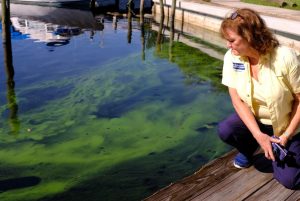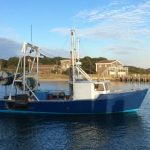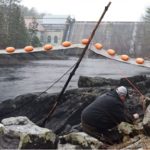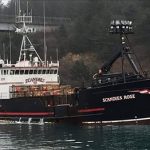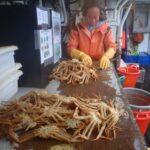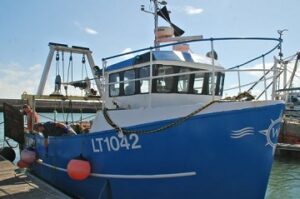Monthly Archives: December 2018
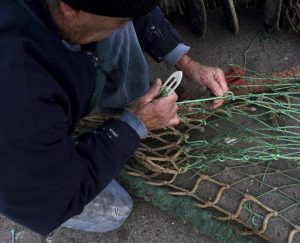
Gloucester: NOAA drops port’s rank in latest report, even as local fish landings, values rise
U.S. fish and shellfish landings increased incrementally last year in both volume and value, while Massachusetts ended the year with the second-highest value of commercial landings among the 50 states, according to an annual report on U.S. fisheries released Thursday by NOAA.,,, The report, however, reflected a reigning status quo for the port of Gloucester. America’s oldest seaport produced slight increases in volume and value of its landings, while its ranking among other U.S. commercial ports declined slightly. The volume of Gloucester landings rose 1 million pounds, or 1.5 percent, from the previous year to 64 million pounds. The value of those landings grew by $1 million, or 1.9 percent, to $53 million from $52 million in 2016. >click to read<20:44

Open Season: It might be time to ‘seal’ a deal to help fishermen
According to local lobstermen, the fishing in Buzzards Bay suffers a lull in the heat of late summer but usually picks up again around Thanksgiving when the water cools. But that’s not the case this year, according to my own experience. I have a recreational lobster license, which allows me to run up to ten pots with a stipulation that the lobsters can’t be sold. I run those ten pots in the Bay from spring through December and fished them as late as mid-January last year, but I hauled them for the season on Tuesday. It stopped being fun. For November and early December, my harvest was less than half of what I caught last year during the same period. Some say that the increase in ocean temperatures, due to climate change, is chasing the lobsters North to colder waters but it’s my opinion that the populations of lobsters, like any other wildlife species, are cyclical with highs and lows. Wildlife numbers are never stagnant. >click to read<18:33
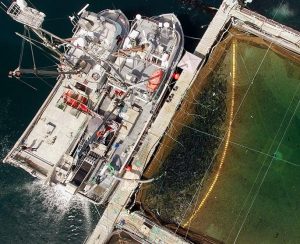
Plan to Close Fish Farms on Salmon Migration Routes a ‘Step in Right Direction’
After months of negotiation, the province and the ’Namgis, Kwikwasut’inuxw Haxwa’mis and Mamalilikulla First Nations announced an agreement to remove some fish farms in the Broughton Archipelago on northern Vancouver Island’s east coast. But both industry and government “have a long way to go to really protect wild salmon,” says Alexandra Morton, a biologist and vocal critic of the foreign-owned fish farm industry. The plan, announced Friday, also gives First Nations more control over the monitoring of fish diseases. Both Marine Harvest, a Norwegian firm, and Cermaq, a Norwegian-run subsidiary of Mitsubishi, have agreed to the plan and foresee no impact on jobs. >click to read<17:34
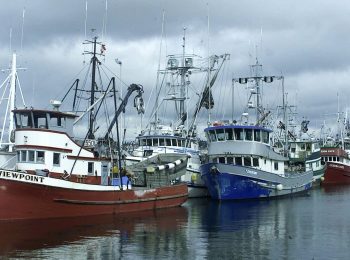
Seattle’s working waterfront: The Port of Seattle has a strategy for world-class maritime industries
Set aside the latest news about drone-delivered packages and consider the changes happening now in the ocean economy. More than 90 percent of the world’s trade travels over water, with total volume expected to triple by 2050. The global value of the ocean economy is expected to reach $3 trillion in the next three decades, with the largest gains coming in tourism. Fisheries provide an increasingly essential source of food, employment and revenue.,,, Maritime jobs offer well-paid and reliable careers and diversify the local economy. The Port of Seattle is seizing these benefits for our region. >click to read<16:57
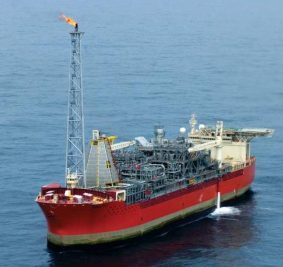
Oil spill raises new questions about fast-growing N.L. oil industry
Newfoundland and Labrador’s ambitious plans to dramatically expand the province’s lucrative offshore oil and gas industry got a nasty jolt on Nov. 16. Amid a fierce winter storm, an estimated 250,000 litres of oil spilled into the ocean from Husky Energy’s SeaRose platform, about 350 kilometres from St. John’s. There are currently four platforms producing oil off Newfoundland: Hibernia, Hebron, Terra Nova and SeaRose Expansion plans include a proposed 100 new exploration wells and over 650,000 barrels of oil per day by the year 2030. This long-term vision also includes “shortened time from proceptivity to production.” >click to read<13:53
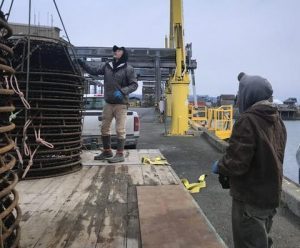
Alaska Fishermen Hauling A Bigger Catch With Gear They Get To Use For The First Time
Longtime Alaska fisherman Bill Harrington has a few choices words about killer whales. “As far as I’m concerned, they’re only thieves in tuxedos,” Harrington says. He’s retired now, but a video from a decade ago shows him pulling in his line as he curses out a pod of killer whales swarming his boat. His catch is exposed; he is not happy. A sperm whale bursts out of the water and Harrington tells them what he really thinks. He knows even just a couple of killer whales could pick his line clean. But now fishermen are taking advantage of new regulations that let them fish with a previously banned piece of gear. Longline pots >click to read<10:20
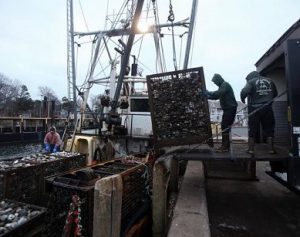
LETTER: Clam fishermen put forth proposal that protects the resource
Last week, the New England Fishery Management Council voted to kick Massachusetts surf clam fishermen off of 80 percent of our historic Nantucket Shoals fishing grounds. Our fishery in these treacherous local waters grosses $10 million per year to the dozen or so boats and their crews, and multiples more to the South Coast fishing economy. Our catch is hand-shucked for a higher value. New Bedford, Fall River, Gloucester, and Bristol, R.I. families stand to lose hundreds of jobs. While the council’s decision was based on habitat considerations, it rejected an option that would have allowed us to fish on about 80 percent of the available surf clam resource while allowing access to less than 20 percent of the overall habitat zone. >click to read<19:45
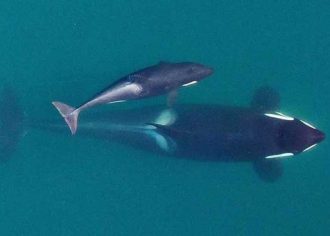
Expert skeptical of Washington state’s orca-saving proposal
“The question is: What’s the problem and what’s the solution?” Ray Hilborn told KIRO Radio’s Dave Ross. “And I have to say, I’m a bit skeptical about much of the discussion that has been raised.” Hilborn is a professor of fisheries and aquatic sciences at the University of Washington. There are many reasons for his skepticism, but a big part of it is that the conversation around the problem has missed the mark on many key points. “It’s almost certainly multiple causes for the decline of Southern Resident Killer Whales, but what I haven’t heard in the discussion is pointing out that Northern Resident Killer Whales, which also depend on Chinook salmon, are doing just fine. There are probably 5-6 times more of them than the Southern residents. Audio report, >click to read<17:47

2019 Togiak herring forecast signals stable population, says ADF&G
The Togiak Pacific herring fishery will see a large return this spring, according to the recently released Alaska Department of Fish and Game 2019 forecast. Based on aerial surveys and population age, ADF&G predicts the Togiak District Pacific herring biomass will be 217,548 tons. That is a 59 percent increase from last year’s forecast. It will allow for a total harvest in the Togiak District sac roe herring fishery of 26,930 tons. “We feel confident we have a stable population there,” said Tim Sands, area management biologist. >click to read<15:58
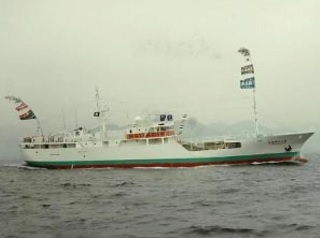
10 Indonesian nationals caught trying to smuggle shark fins from Hawaii plead guilty
The fishermen accused of trying to smuggle nearly 1,000 shark fins out of Hawaii changed their plead in court Friday to guilty. Federal investigators say the 10 Indonesian nationals were caught last month after trying to sneak the shark fins through Honolulu’s airport. They were all working aboard the Japanese-flagged fishing vessel Kyoshin Maru and were part of an extensive shark fining operation. >click to read<14:12
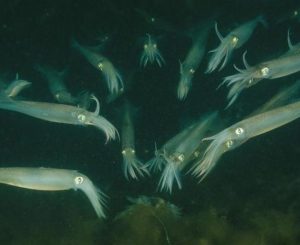
NOAA Fisheries Approves Changes to Longfin Squid Permits and Possession Limits
NOAA Fisheries has approved Amendment 20 to the Atlantic Mackerel, Squid, and Butterfish Fishery Management Plan. The measures become effective on March 1, 2019. Specifically, the final rule:
Separates the current longfin/butterfish moratorium permit to create a new butterfish moratorium permit and a separate longfin squid moratorium permit; Creates a “Tier 1” longfin squid moratorium permit for vessels that landed at least 10,000 lb of longfin squid in any year from 1997-2013; Creates a “Tier 2” longfin squid moratorium permit with a 5,000 lb possession limit fo,,, New longfin squid and butterfish permits will become effective on March 1, 2019 and will be issued by the Regional Administrator as follows:>click to read<13:36
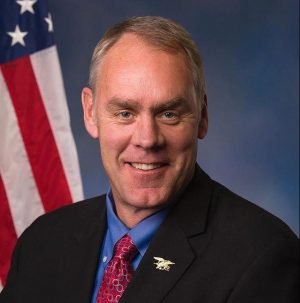
Ryan Zinke Is Leaving The Interior Department, Trump Tweets
Ryan Zinke is out as Secretary of the Interior. Zinke will be leaving the Trump administration at the end of the year; his successor is expected to be announced next week. On Saturday morning President Trump tweeted that Zinke is leaving after serving for almost two years. He said Zinke has accomplished much during his tenure, and thanked him for his service. Zinke’s departure comes after a tumultuous two years at the department, marked by mounting allegations of misconduct in office. He also faced the prospect of congressional probes after newly-elected Democrats take majority control of the House. >click to read<10:55
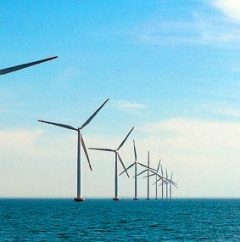
Wind farms, fishing industry must co-exist?
A new report from the National Oceanic and Atmospheric Administration has highlighted the enormous impact of the fishing industry on the Massachusetts economy, with New Bedford topping the list of highest-value ports in the entire United States with a whopping $389 million worth of seafood landed in 2017. The report also highlights that fishing supports 87,000 jobs in the commonwealth,,,, This data could not come at a more critical time for New England’s fishermen, who are raising concerns about how new wind farms will impact marine life in the area. While reducing the state’s carbon footprint is a noble goal, the heavily taxpayer-subsidized wind projects have yet to prove themselves reliable and effective in the marketplace and come with a host of unanswered questions about the costs and long-term environmental outcome. Gov. Charlie Baker believes the state can find a way to make wind energy work for everyone, including fishermen. “Nobody cares more about the fishing community than this administration,” >click to read<
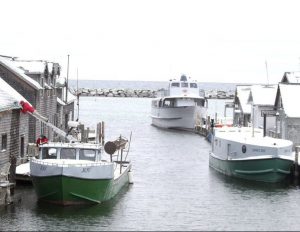
Historic fishing village strung with lights for holiday season
Leland’s Fishtown will pull off a first when it bathes its collection of historic shanties in a holiday glow. A total of 3,800 feet of classic warm white lights custom cut for each shanty will illuminate Fishtown through the holiday season — something that’s never been done before, said Amanda Holmes, executive director of Fishtown Preservation Society. The light display honors long-time Fishtown supporter Keith Burnham, who will flip the switch and light things up Friday at 5:30 p.m. during the Fishtown in Lights event. Hot cider and cookies will be served and Leland High School will be on hand to lead carolers. >click to read<09:29
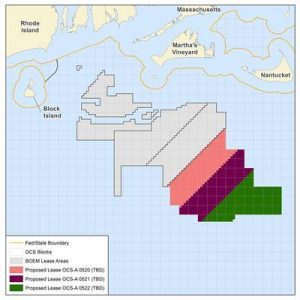
Europeans Sweep Record US Offshore Wind Auction
A U.S. government auction for three wind leases off the coast of Massachusetts ended on Friday with record-setting bids totaling more than $400 million from European energy giants including Royal Dutch Shell Plc and Equinor ASA. The Bureau of Ocean Energy Management (BOEM) announced the sale’s three winners – Equinor Wind US LLC, Mayflower Wind Energy LLC, and Vineyard Wind LLC, at the conclusion of the two-day sale that attracted 11 bidders and lasted 32 rounds. Mayflower is a joint venture owned by Shell and EDP Renewables, a division of Portugal’s EDP. Vineyard Wind is a joint venture between Copenhagen Infrastructure Partners and Avangrid Inc, a division of Spain’s Iberdrola SA. Equinor is the Norwegian company formerly known as Statoil. Equinor and Mayflower each bid $135 million for their leases, while Vineyard Wind bid $135.1 million, BOEM said. >click to read<21:57
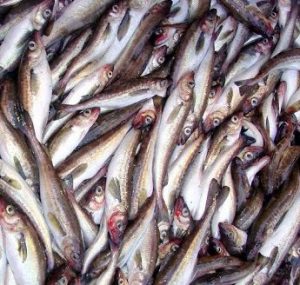
NPFMC adopts ecosystem management plan, Pollock TAC rises for Bering Sea, lowers for GOA, while cod TACS drop for both areas
Federal fisheries managers have taken a big step toward better environmental management of vast marine resources with adoption of a new Bering Sea Fishery Ecosystem Plan, in the face of dynamic climate changes impacting this vast ocean area. The plan, which sets the stage for developing a work plan for action modules critical to ecosystem protection, was approved during the December meeting of the North Pacific Fishery Management Council in Anchorage. Along with passage of the plan itself, the council tasked its Bering Sea fisheries ecosystem plan team with developing work plans for three action modules.,,, In other action during the week-long Anchorage meeting the NPFMC set the total allowable catch of groundfish for the Bering Sea/Aleutian Islands and the Gulf of Alaska. >click to read<18:36
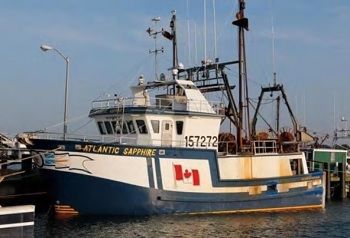
Three Fishermen rescued after fishing boat sinks off Nova Scotia
Three crew members are safe after their fishing boat sank late Thursday night off Pubnico, N.S. A nearby fishing boat, the Angela O, rescued the trio after they abandoned the 18-metre Atlantic Sapphire, said the Joint Rescue Co-ordination Centre in Halifax. The centre said it was not involved in the rescue and was unable to offer more details. Jacky d’Entremont, whose husband, Avery d’Entremont, is a crew member on board the Atlantic Sapphire, said she spoke to her spouse “very, very briefly” when he called just after midnight. >click to read<16:53
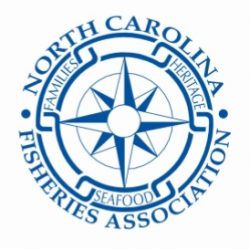
North Carolina Fisheries Association Weekly Update for December 14, 2018
>Click here to read the Weekly Update<, to read all the updates >click here<, for older updates listed as NCFA >click here< Fishermen, for-hire boat captains, and others associated with North Carolina’s marine fishery may get a phone call from federal or state authorities asking about impacts from Hurricane Florence. The National Marine Fisheries Service (NOAA-Fisheries) is working with the N.C. Division of Marine Fisheries to evaluate fisheries damages from the storm.,,, 16:14
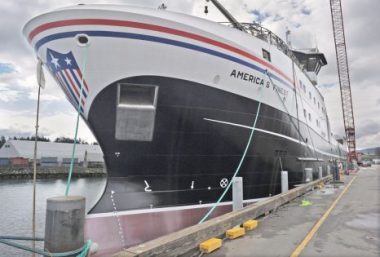
The Jones Act’s Strange Bedfellows
A strange thing happened on December 6th, 2018, when President Donald Trump signed a waiver that allowed the American business, Fishermen’s Finest, to sail its 80.5-meter fishing boat, America’s Finest, out of a Washington State shipyard over objections from special interest labor unions and trade associations. The ship was held in the harbor because its hull was made with too much Dutch steel. This violated the century-old protectionist law, the Jones Act, a little-known law passed in 1920. Even many of those who are hurt by it are unfamiliar with how this cumbersome law that likely costs the American economy millions of dollars every year. >click to read<15:53
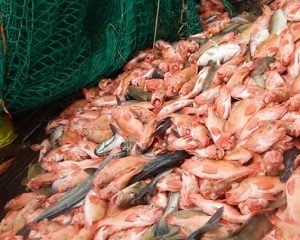
Nova Scotia looks to keep redfish quota as other provinces want in
A Nova Scotia seafood company is urging the federal government to wait several years before starting a large-scale commercial harvest for redfish in the Gulf of St. Lawrence. Also known as ocean perch, the species has made a remarkable comeback after a 25-year moratorium. “This biomass is huge. It’s probably the largest in history,” said Jan Voutier of Louisbourg Seafoods Ltd., a Nova Scotia redfish harvester and processor. It’s believed 3.5 million tonnes of redfish are in the gulf today, setting the stage for a looming interprovincial conflict in Atlantic Canada over who gets a piece of the action.”All of a sudden, everyone wants to rush in and get the pot of gold, as it were,” said Keith Colwell, Nova Scotia’s fisheries minister. >click to read<12:20

‘Fish don’t do borders’: Life on the Irish Sea after a hard Brexit
It is an overcast but dry December morning at Howth pier in north Co Dublin. John Lynch and his crew are preparing to take his trawler, the Eblana, out into the Irish Sea. The water is calm, for now. Our destination is a border, not a hard or soft border but a watery frontier. Lynch is bringing The Irish Times out to the Irish Sea border between what will be European Union and UK waters after Brexit. The boundary is just 30 nautical miles out, the equivalent of 34 miles on land. If the Brexit deal is not ratified by the time the UK is set to leave the EU on March 29th, 2019, this is the line beyond which Lynch must pull up his nets and stop fishing. >click to read<11:01
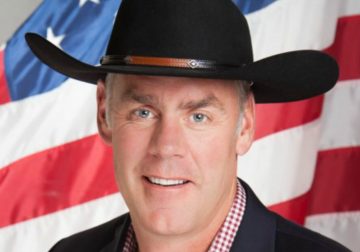
Offshore wind developers ante up at auction of leases near Block Island
In what is sure to be seen as an affirmation of their industry’s prospects, a scrum of offshore wind developers is poised to pay an unprecedented amount of money for the latest set of leases being auctioned off in federal ocean waters near Rhode Island and Massachusetts. When the federal Bureau of Ocean Energy Management suspended its auction Thursday night for the three leases located in waters about 51 miles southeast of Block Island, the bids for each had reached between $91 million and $101 million — more than twice the highest amount paid in the past for an offshore wind lease in the United States and a range that compares favorably to payments for oil and gas projects. The bureau, part of the U.S. Department of the Interior, described the day as “historic.” In a tweet, Interior Secretary Ryan Zinke said, “We have something big going on off the coast of Massachusetts.” >click to read<10:13
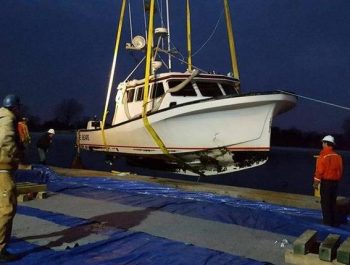
Coast Guard Raises Sunken Fishing Vessel from Shark River Inlet Off Manasquan
The U.S. Coast Guard’s Manasquan Inlet/Shark River station has reported that the Miss Kathleen was successfully raised from the Manasquan Inlet last night and placed on a barge. The removal of the 44-foot commercial fishing boat comes nearly a week after it struck the northern Manasquan Inlet jetty on December 8 and started taking on water, according to the Coast Guard Sector Delaware Bay. >click to read<09:22
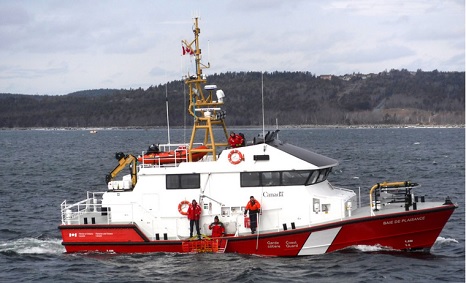
New SAR lifeboats for Canadian Coast Guard
Public Services and Procurement Canada is set to acquire eight new SAR lifeboats from Chantier Naval Forillon and Hike Metal Products for the Canadian Coast Guard. The companies are already producing six SAR lifeboats each under contracts signed in 2015. Under the amended contracts, each shipyard will build four additional vessels at a total cost of $61.8 million. With the ability to operate up to 100 nautical miles from shore, these new high-endurance lifeboats will enhance the coast guard’s SAR capabilities. >click to read<21:10
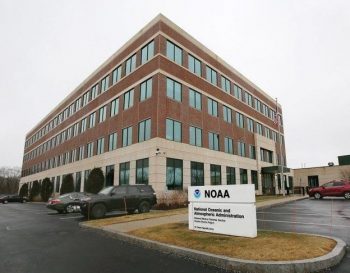
On and Off Meeting at NOAA office last week
I received an email from the NOAA office last week concerning SKG money that is in their hands to decide on those who applied for the ten million dollars they grant to others each year. So I called fisherman, The Fishermens Wife’s and others in the fishing industry, even a couple of Senators about the meeting. I was told by NOAA you did not have to register, and anyone could speak.
The next email I got was the meeting was cancelled do to the lack of those that were going to attend the meeting. At about the same time of year, about two years ago, I had said the grant money is not going to our fisherman, and said the paper work was over forty pages to be submitted to NOAA. The average fisherman does finds it hard to fill it out. Sam Parisi>click to read<19:55
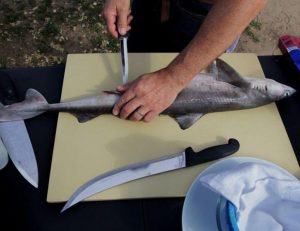
Dogfish harvest to stay same in ’19 as fishermen seek market
Federal ocean managers are allowing the same level of harvest of smooth dogfish, a small species of shark that members of the East Coast seafood industry have tried to find a market for. The National Oceanic and Atmospheric Administration says the smooth dogfish quota will be a little less than 4 million pounds in 2019. Earlier this year, the Cape Cod Commercial Fishermen’s Alliance received a Saltonstall-Kennedy grant of about $37,000 from NOAA for a marketing and promotion project centered on raising the profile of dogfish – including changing the name of the species – to make it more attractive to consumers. >click to read<19:29
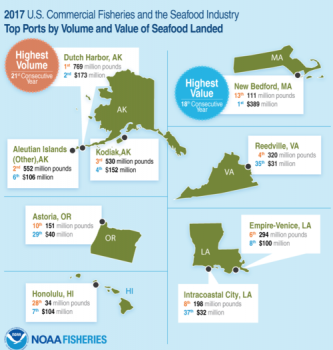
NOAA Fisheries release two reports showing the number of landings and value of for U.S. fisheries
NOAA Fisheries has released Fisheries of the United States, 2017 >click to read< and Fisheries Economics of the United States, 2016 >click to read>. Fisheries of the United States provides data on commercial landings and value and recreational catch. It also includes data on the fish processing industry, aquaculture production, imports and exports, and per capita seafood consumption. Our Fisheries Economics of the United States reports analyzes the economic impact of fisheries and related sectors, including employment, sales, and value-added impacts to the broader economy. >click to read<16:08

Port of New Bedford ranks No. 1 for 18th consecutive year
Death, taxes and New Bedford ranked as the most valuable fishing port in the country remain certainties in life. NOAA announced its annual fish landings data on Thursday for 2017, and for the 18th consecutive year the Port of New Bedford topped all others in terms of value. The port landed $389 million in 2017, more than $200 million more than Dutch Harbor, Alaska, which landed $173 million. Scallops accounted for 80 percent of the seafood landed in New Bedford.>click to read<15:23
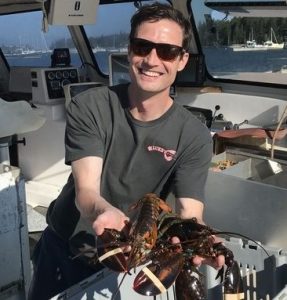
As Luke’s Lobster grows, its owner keeps an eye on sustainability
“It all starts with the fishermen,” he said. “Without them, we don’t have the great product to sell in our restaurants or through our retail partners. We’re a certified B Corporation, so it’s in our DNA to look for the win-win as we grow the business.”The co-op partnership model began in 2016, shortly after Tenants Harbor fishermen and Holden founded the Tenants Harbor Fisherman’s Co-op on Miller’s Wharf, according to a company news release. At that time, Holden started a restaurant on Miller’s Wharf and began returning 50% of the profits from the restaurant back to the co-op. >click to read<14:28
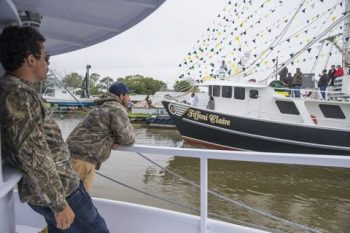
Louisiana: State begins coast-wide effort to sustain fisheries hit by wetland erosion, restoration projects
State officials have embarked on a coast-wide effort to partner with the commercial and recreational fishing industry to find ways to make fishing more sustainable in the future, even as some state projects aimed at restoring coastal wetlands and land threaten fisheries and fishers. Representatives of Louisiana Sea Grant, the state Department of Wildlife and Fisheries and the Coastal Protection and Restoration Authority told members of the authority’s board on Wednesday (Dec. 12) that a joint fishing industry adaptation program begun earlier this year is aimed at listening to fishers and incorporating their ideas in any future adaptation plans. >click to read<12:22




































